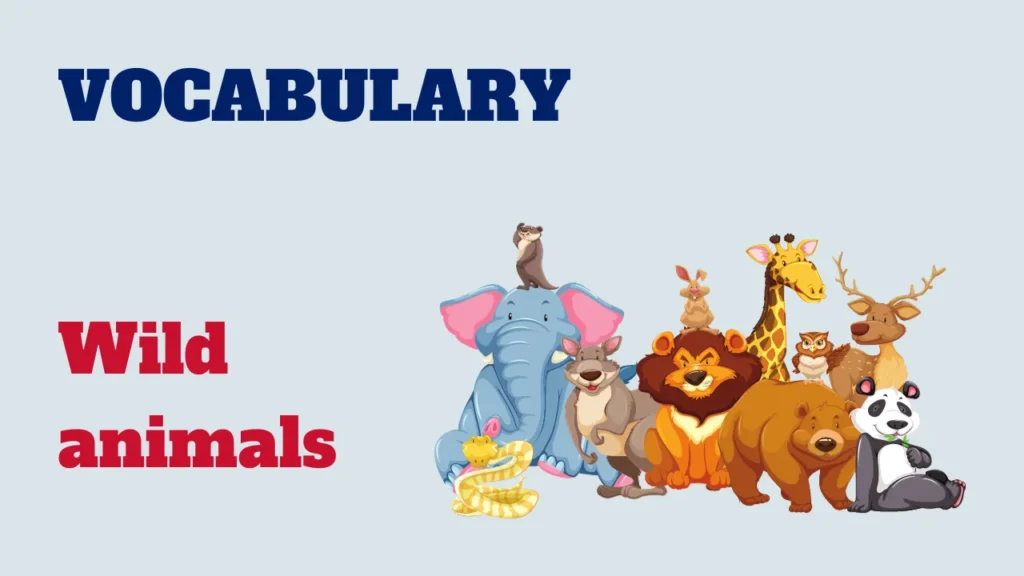Embark on a journey through the wilderness with this vocabulary lesson focused on wild animals.

From majestic predators to fascinating creatures, let’s explore the diverse world of wildlife.
Wild animals vocabulary
- Lion: A large carnivorous feline found in Africa and some parts of Asia, known for its majestic mane.
- Elephant: A massive herbivorous mammal with a trunk, large ears, and tusks, native to Africa and Asia.
- Tiger: A powerful carnivorous big cat, characterized by its distinctive orange coat with dark stripes.
- Giraffe: A tall herbivorous mammal with a long neck and spotted coat, native to Africa.
- Kangaroo: A marsupial with powerful hind legs, native to Australia, known for hopping and carrying offspring in a pouch.
- Panda: A large black-and-white bear-like mammal native to China, known for its bamboo diet.
- Zebra: A wild horse with black and white stripes native to Africa.
- Gorilla: A large, powerful ape native to Africa, known for its intelligence and strength.
- Cheetah: A swift and agile big cat with distinctive black tear stripes, known for its incredible speed.
- Hippopotamus: A large herbivorous mammal with thick skin, native to sub-Saharan Africa.
- Koala: An arboreal marsupial native to Australia, known for its round face and preference for eucalyptus leaves.
- Crocodile: A large aquatic reptile with a long snout and sharp teeth, found in tropical regions.
Congratulations on expanding your wild animals vocabulary! Whether you’re fascinated by the strength of lions, the elegance of giraffes, or the uniqueness of pandas, these words will help you describe and appreciate the incredible diversity of wildlife. Stay tuned for more vocabulary lessons on our language-learning journey!
Learn English
Share this 👉 https://quickglish.net/vja5



